Going Against the Grain: Three New Innovations Could Completely Transform How We Store and Distribute Food
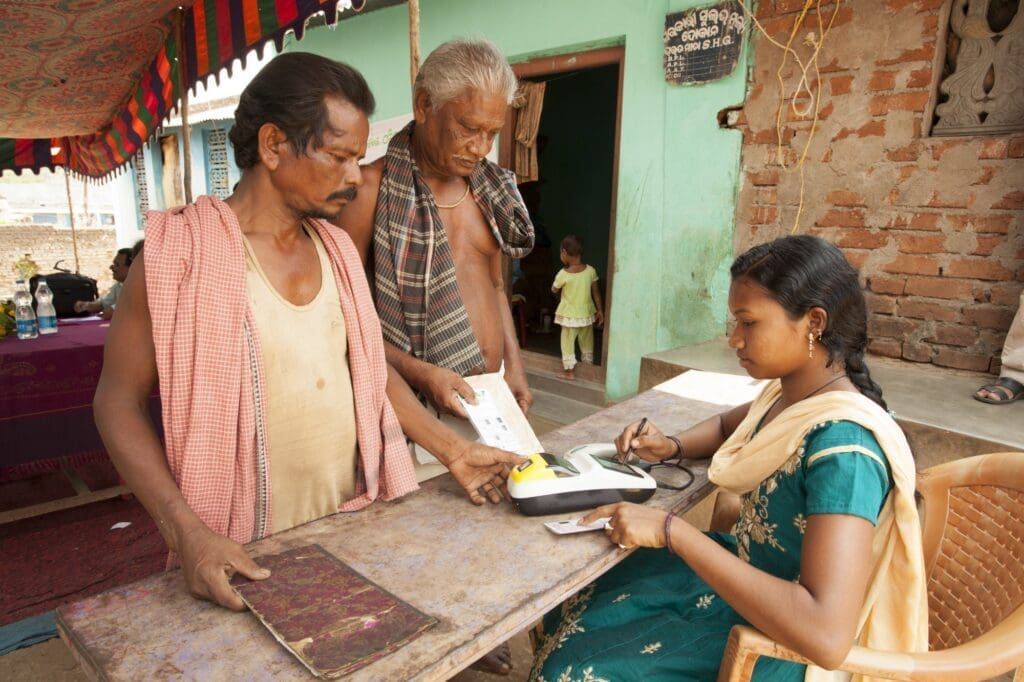
Just four crops — wheat, corn, rice and soybeans — provide two-thirds of the world’s food supply. Supporting innovations that can improve how grains are stored, processed or distributed is essential to disrupting hunger. These three inovations are doing just that.
An ATM for Food
“I don’t care how long you make me wait, but please ensure that I get my food grains. I don’t want my family to go hungry.”
That’s what Ankit Sood, Head of the Systems Reforms Unit at the United Nations World Food Programme (WFP) India, was told by an elderly gentleman at a shop in eastern India. The man was waiting to receive rations of subsidized food grains from a “fair price” shop through India’s food security system, the world’s largest food-based safety net.
Unfortunately, on average, people reliant on India’s food security system are provided with 10 to 20 percent less grains than they should receive. Shopkeepers often under-weigh the subsidized grains, as they have an incentive to sell the surplus at a higher price.
That’s what inspired the U.N. World Food Programme’s India country office to come up with GrainATM: an automated dispensing machine to provide people with any-time access to the grains of their choice, quickly, hygienically and accurately. GrainATM allows people to get the exact amount of grains that they should receive, without any manual interference. The U.N. World Food Programme’s digital identification smartcards can be used to verify the recipient.

The prototype GrainATM being tested in a factory setting in India. The dispenser is designed to hold about 200 kilograms of wheat and rice.
And faced by the global outbreak of COVID-19, GrainATM’s potential to reduce face-to-face interactions while still providing access to rations could be a game-changer for WFP and other humanitarian agencies.
After having participated in a U.N. World Food Programme Innovation Bootcamp in San Francisco in October 2019, the project is aiming to design, develop and test six GrainATMs, providing a proof of concept for the Government of India to scale-up. The first prototype GrainATM has already been built and is currently being tested in a factory setting.
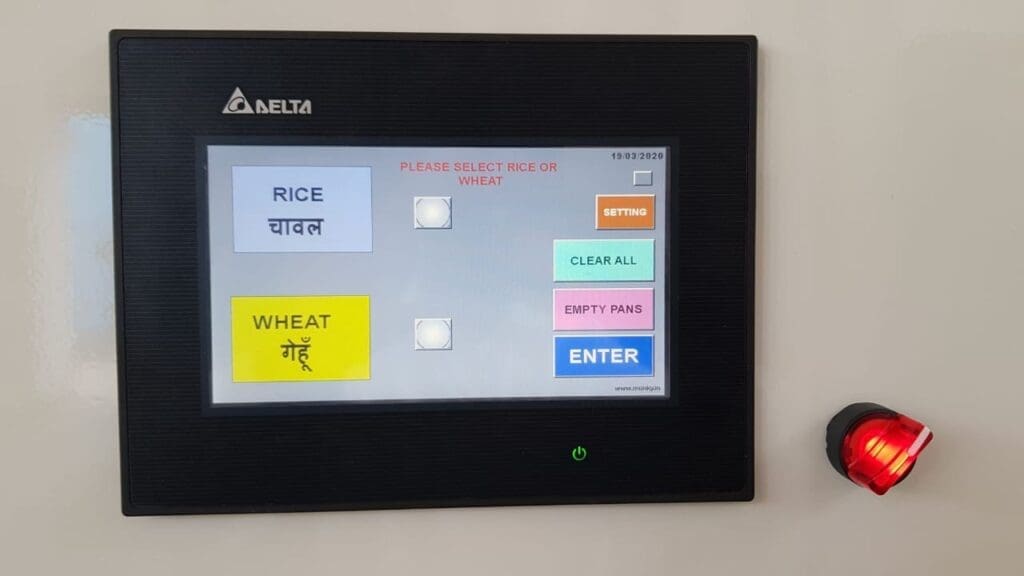
GrainATM will ensure the right amount of grain is dispensed to the right person at the right time, while maintaining social distancing.
Sprinting From Idea to Impact
GrainATM is one of three grain-related projects that were recently selected for the U.N. World Food Programme Innovation Accelerator’s Sprint Program — an intense six-month acceleration program that matches innovators and startups with exceptional support to sprint from idea to impact.
The projects will receive access to world-class mentors, results-driven programming, the U.N. World Food Programme’s vast field operations, and hands-on support from an experienced project manager. Thanks to the generous support of the German government, they will also be awarded up to $100,000 in equity-free funding.
Dry Grains Mean Income Gains
Memouna, a small scale farmer in Ghana harvested ten bags of corn after six months of hard work. Out of these ten bags, three grew moldy and were lost, leaving her with only seven bags to sell and feed her family.
Small-scale farmers across Sub-Saharan Africa like Memouna routinely lose up to 40 percent of their grain harvest as a result of post-harvest losses. One of the main causes is storing grains at high moisture contents, which leads to the growth of mold and contamination by aflatoxins.
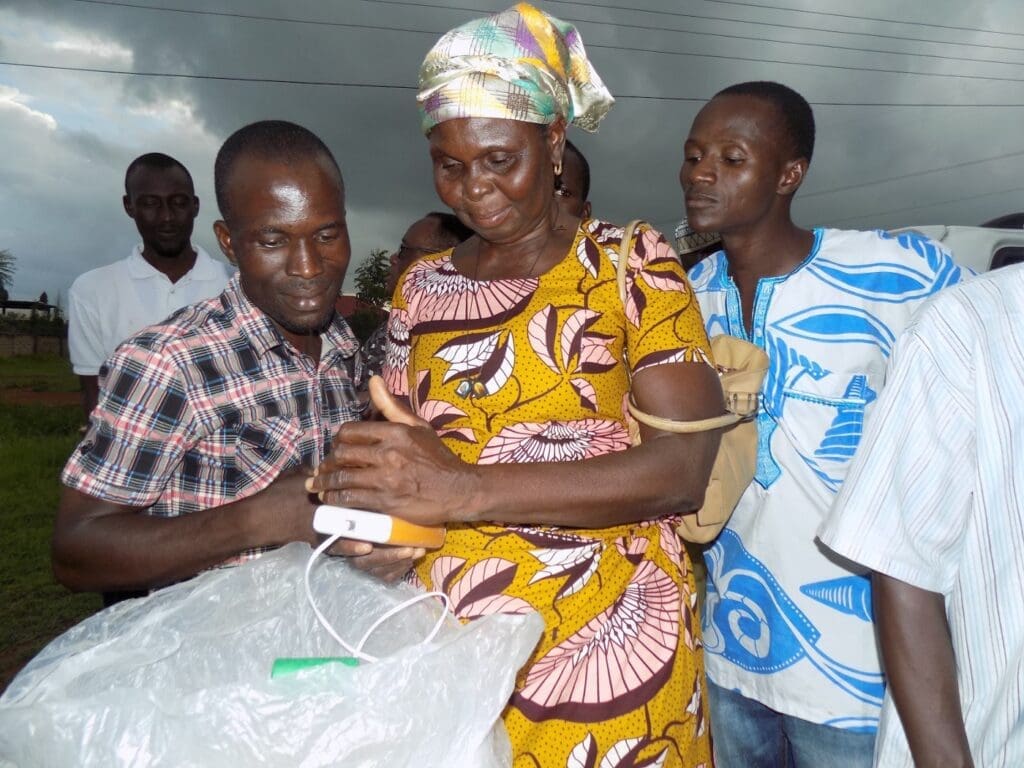
The GrainMate moisture meter helps farmers measure the moisture content in their grains and reduce post-harvest losses.
One solution? Sesi Technologies’ GrainMate, an effective, low-cost and easy-to-use grain moisture meter to help farmers measure the moisture content in their grains and reduce post-harvest losses. Solutions like GrainMate have the potential to increase farmers’ resilience to economic shocks caused by crises like COVID-19.
After winning the most impactful pitch award at a 2019 pitch night at Google headquarters in Silicon Valley, GrainMate has been selected for the U.N. World Food Programme’s Sprint Program. Through U.N. World Food Programme support, GrainMate will run a pilot to test small-scale farmers’ willingness and ability to buy the meter, as well as farmers’ understanding of the benefits of using moisture meters in improving their storage practices.
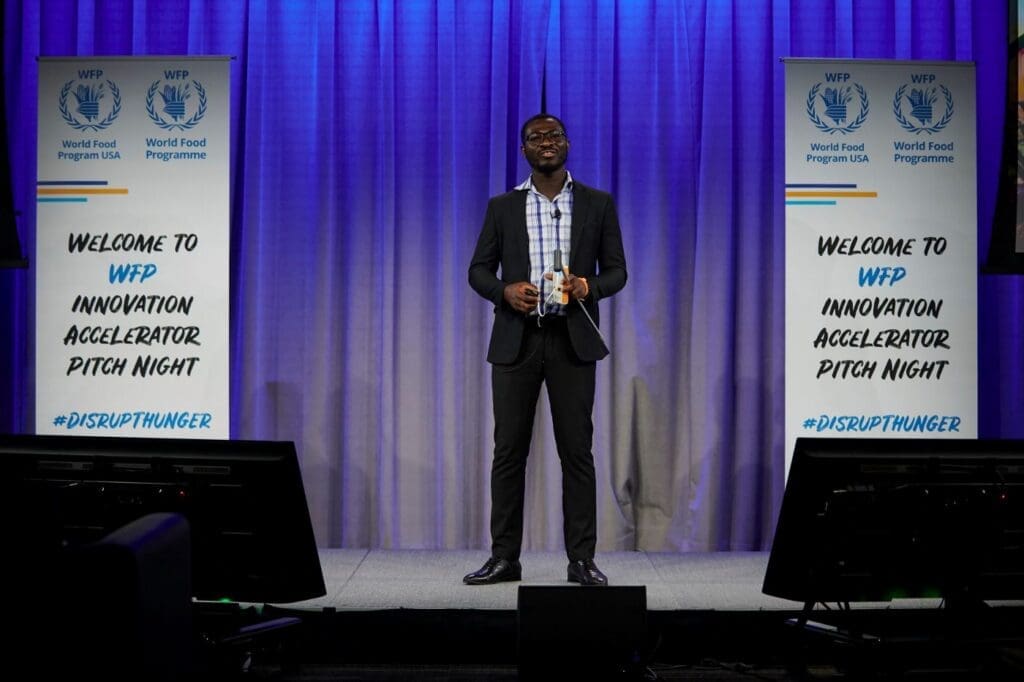
Isaac Sesi, co-founder of Sesi Technologies pitching GrainMate on-stage at WFP’s Silicon Valley Pitch Night. GrainMate won the “Most Impactful Pitch Award.”
It’s All in the Bag
In Ethiopia, a U.N. World Food Programme-supported project will work to increase farmers’ incomes and reduce food loss by promoting the use of hermetic bags for crop storage.
Small-scale farmers across Africa store their grain harvests in traditional jute bags that do not protect the crops from insects or the build-up of toxins, resulting in significant post-harvest losses. In Ethiopia alone, a U.N. World Food Programme and FAO assessment estimated that small-scale farmers lose 2 million metric tons of crops every year due to post-harvest losses.
Hermetic bags are a proven technical solution to protect stored grains from post-harvest losses. When grains are stored in hermetic bags, insects cannot reproduce and suffocate before causing significant damage. Unfortunately, despite the evidence, hermetic bags have not caught on as a mass-market product.
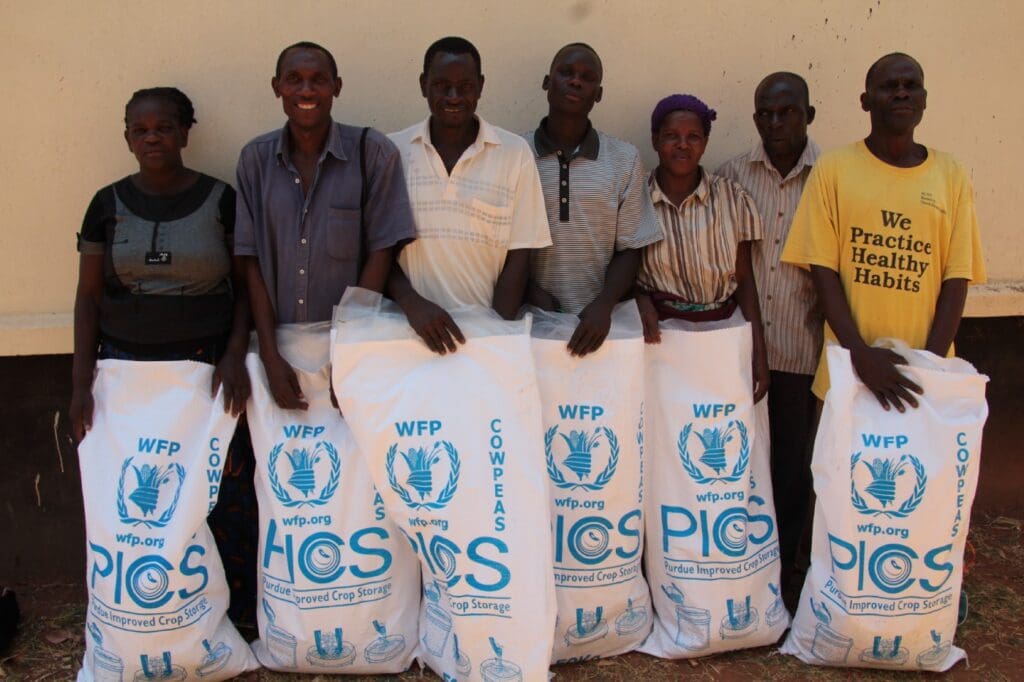
Hermetic storage bags are a simple and low-cost method of reducing post-harvest losses due to pests, helping smallholder farmers in Ethiopia.
Building off a previous Sprint project, with the support of the U.N. World Food Programme Innovation Accelerator, Saving Grains will introduce hermetic bags to 1,000 small-scale farmers in Ethiopia. This trial will gather valuable insights to inform a mass marketing campaign leveraging mass media, such as radio, SMS, TV, and social media, as well as direct marketing, such as road shows, trade fairs, village demonstrations, and market demonstrations.
About the Accelerator
The U.N. World Food Programme Innovation Accelerator sources, supports and scales high-potential solutions to end hunger worldwide. We provide U.N. World Food Programme staff, entrepreneurs, start-ups, companies and non-governmental organizations with access to funding, mentorship, hands-on support and U.N. World Food Programme operations.
Find out more about the U.N. World Food Programme’s Innovation Accelerator here. Subscribe to their e-newsletter here, and follow them on Twitter.
___________________________________________________
This story was written by Liam Brown and originally appeared on the U.N. World Food Programme’s Innovation Accelerator blog.




